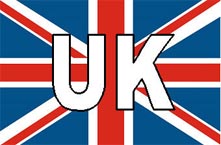Powerful new art from the Middle East on show in London
London - "We need more than images to understand this conflict," says Palestinian artist Wafa  Hourani, standing next to his miniature recreation of Qalandia, the main West Bank checkpoint near Ramallah, and his model of a nearby Palestinian town.
Hourani, standing next to his miniature recreation of Qalandia, the main West Bank checkpoint near Ramallah, and his model of a nearby Palestinian town.
He has named his work Qalandia 2067 - dating it 100 years after the Six-Day War. Visitors turning back after passing through the thick dividing walls of the checkpoint will catch their image in large mirrors.
"The mirror on the wall is the new solution. The people of Ramallah need to see themselves," explains the 30-year-old artist.
Once his people examined themselves to overcome their divisions, control their emotions and become better at politics, their potential to create a happy future would be unlocked, says Hourani with a winning smile.
He is one of 19 artists from Middle Eastern countries and Iran whose works are shown in a new exhibition in the Saatchi Gallery in London, called Unveiled: New Art from the Middle East.
Iraqi-born Saatchi, a multi-millionaire and one of Britain's foremost sponsors and collectors of contemporary art, believes that new artists from the Middle East have been largely overlooked internationally because of the widespread conflict that dominates the region.
"The artists from the region are shattering tidy preconceptions to present an extraordinarily diverse range of artistic expression emerging from the Middle East and its diaspora," said a gallery statement.
The works on display in the light and spacious rooms of the gallery, housed in former army barracks in central London, are, in their majority, political, mocking, shocking, and even provocative.
Centrepiece is Ghost, an installation by Kader Attia, a French Algerian from Paris, whose 240 life-size figures of supplicant Muslim women in prayer shock by the discovery that they are vacant shells of tin foil, each with a gaping black hole where the face should be swathed in the veil.
Hidden War, womens' faces contorted by pain and fear, dominate a photographic triptych by Iraq's Halim Al-Karim, now based in the US, while Syrian artist Diana Al-Hadid's Tower Of Infinite Problems links the twin towers and the tower of Babel to suggest the failure of civilizations in a cyclical repetition of history.
But it is the Iranian artists who in the London show appear to be the most provocative, according to art critics.
A Men of Allah series of manipulated photographs by Ramin Haerizadeh shows semi-naked men in sensuous poses. Female artists Shadi Gharidian and Shirin Fakim highlight the role of women in the Islamic state with humorous make-shift sculptures of Tehran prostitutes and veiled women whose faced are covered by rubber gloves and other kitchen utensils.
The Daily Telegraph said that while the "passionate and risky" exhibition could be seen as "mocking the Mullahs," the works on show were remarkable for "transcending their political context."
The Times described the Saatchi show as a richly-fascinating and revelatory survey of what young artists of the region had to offer. The exhibition put an end to the "dinner party conception" that a blanket ban existed on representation in Islamic art.
However, the "raw and provocative energy" of the works on display could, said the Times, "provoke hostile reactions from Muslim fundamentalist quarters." (dpa)